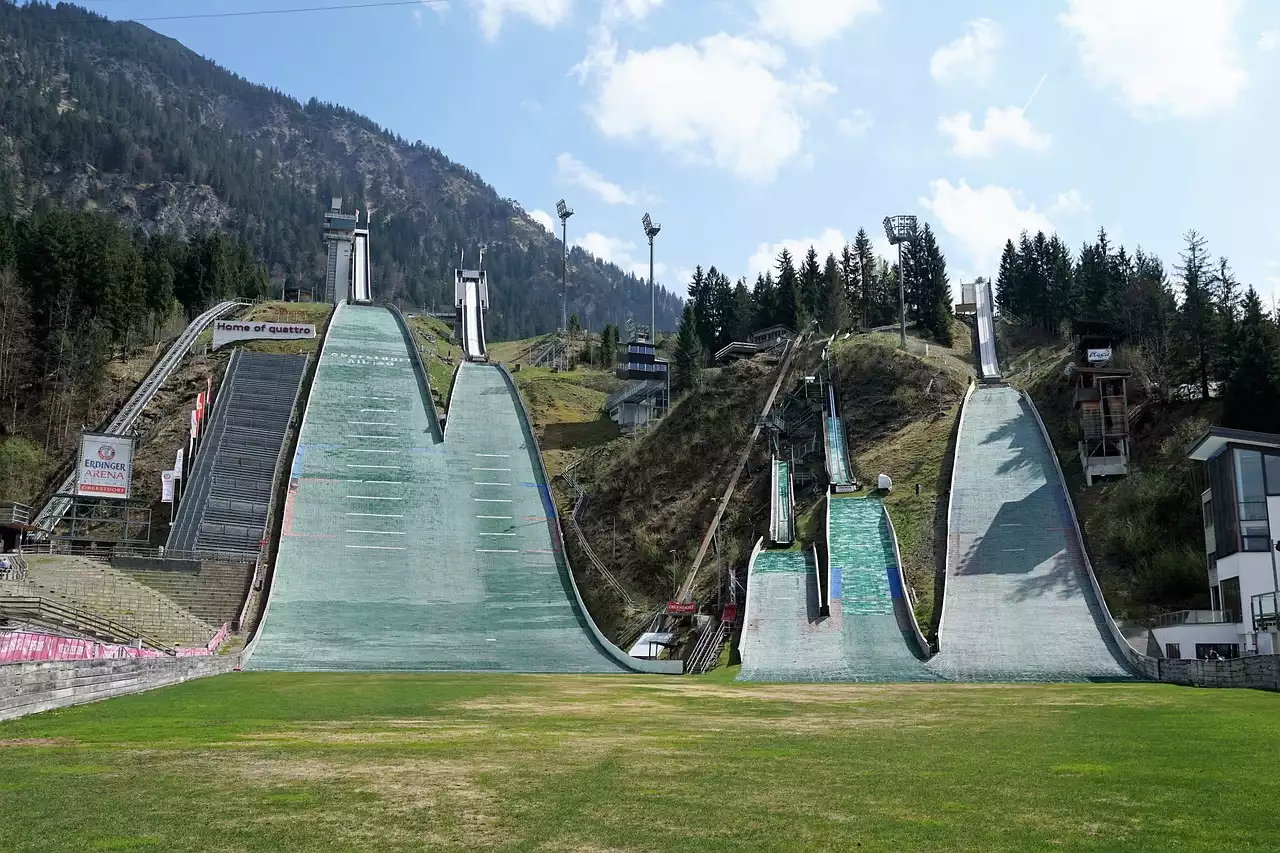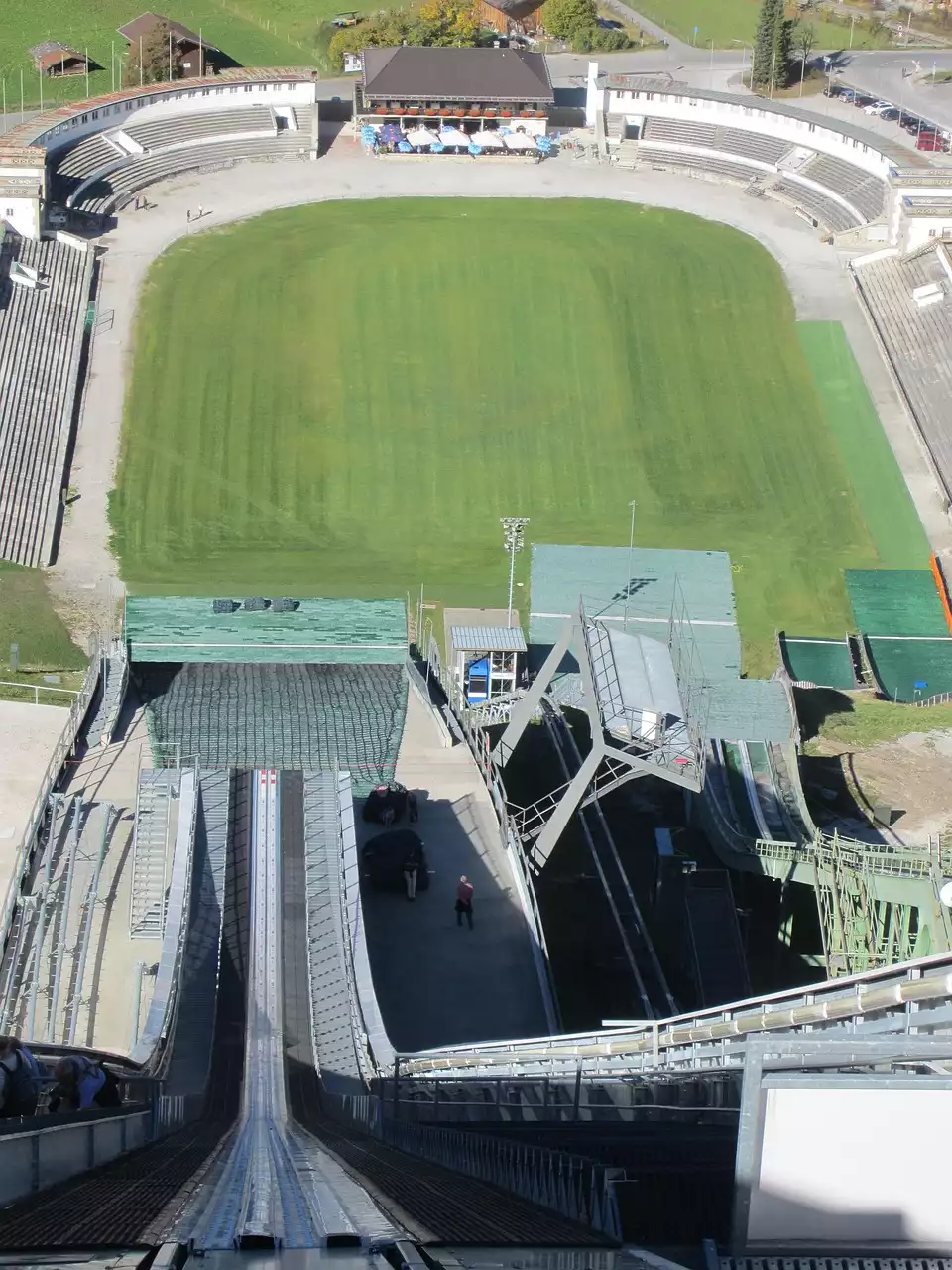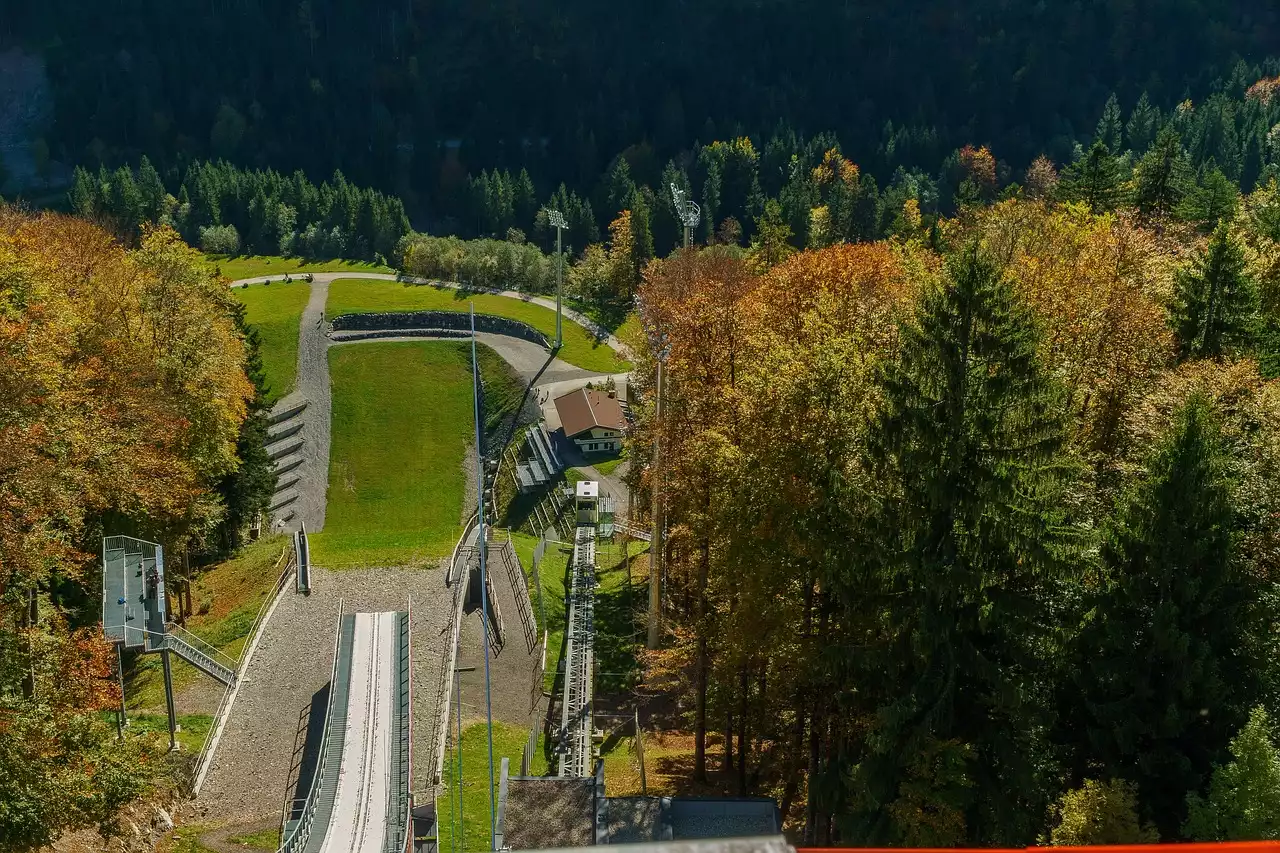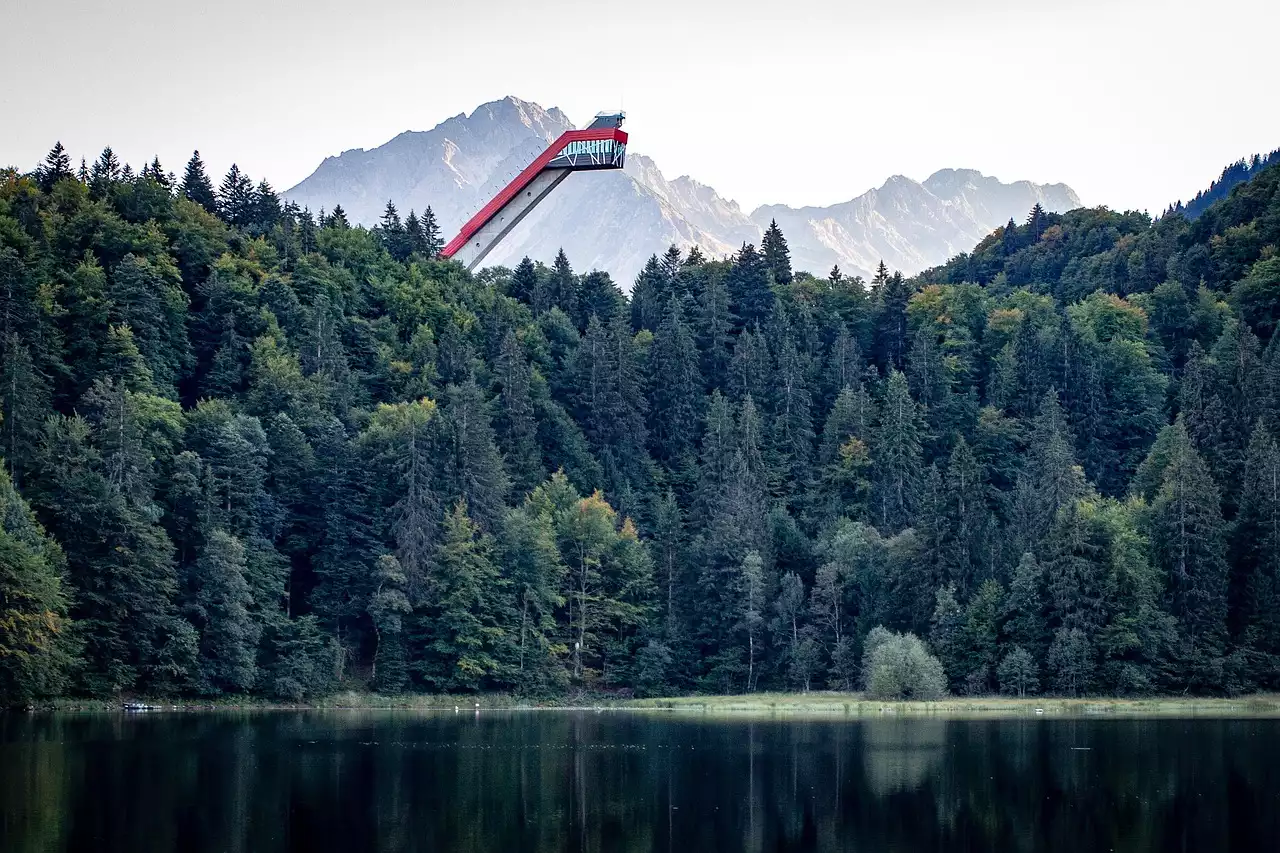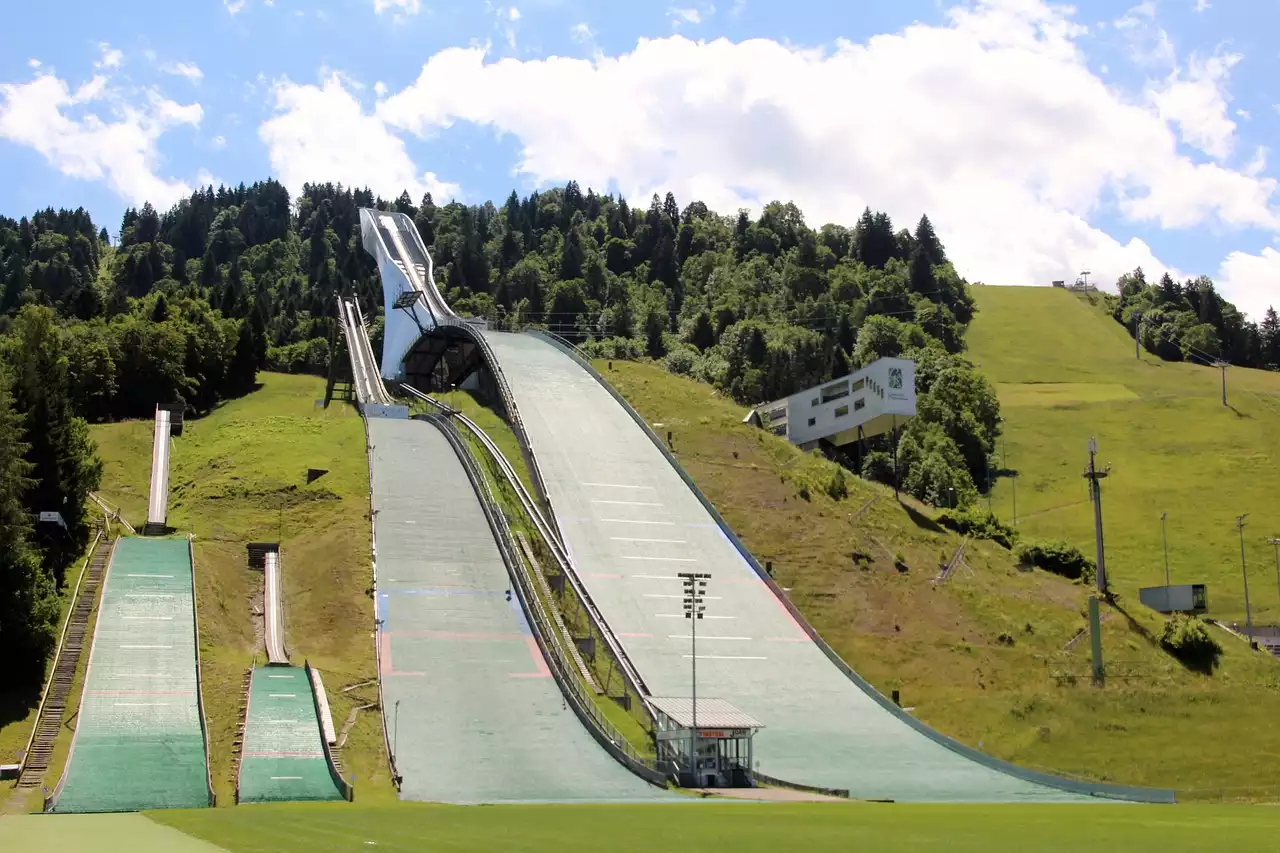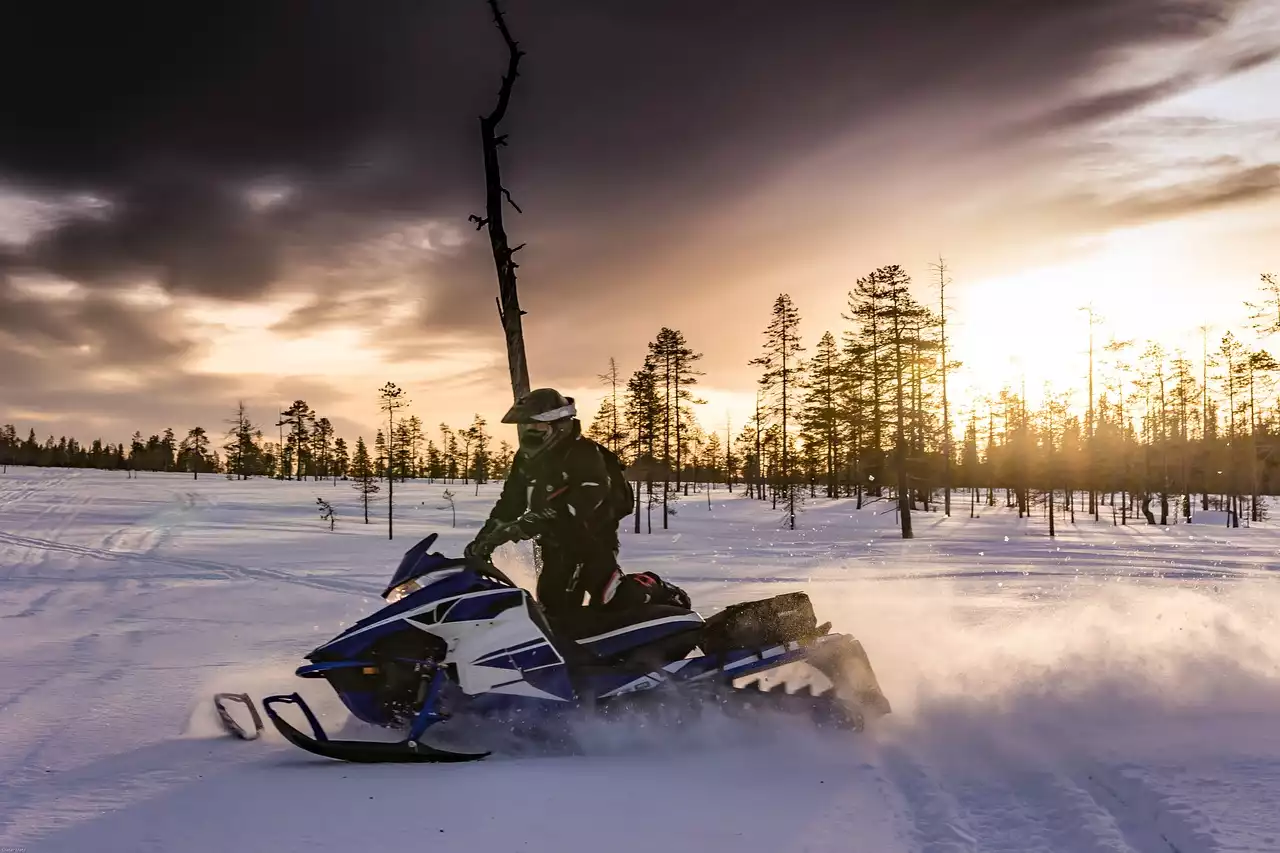The Physics Behind Ski Jumping
Ski jumping is a sport that defies the laws of gravity. It involves propelling oneself off a ramp and soaring through the air before gracefully landing on the snow below. But how is it possible to achieve such incredible distances and heights? The answer lies in the physics behind ski jumping.
One of the key factors that determines the success of a ski jump is the takeoff speed. Skiers aim to reach the optimal speed at the end of the takeoff ramp, which allows them to generate enough lift and achieve maximum distance. The speed is influenced by various factors, including the skier's body position, the angle of the ramp, the wind conditions, and the wax on the skis.
Another crucial aspect of ski jumping is the aerodynamics involved. Skiers adopt a streamlined position, with their bodies leaning forward and their arms extended to reduce air resistance. This minimizes drag and allows them to maintain their speed as they glide through the air. Additionally, the shape of the skis plays a significant role in aerodynamics. Skis with a larger surface area provide more lift, allowing the skier to stay in the air for a longer period of time.
The landing phase of a ski jump is equally important. Skiers must position their bodies correctly to absorb the impact and maintain balance upon landing. The knees act as shock absorbers, cushioning the landing and preventing injuries. Proper landing technique is crucial to avoid crashes and ensure a successful jump.
In summary, ski jumping is a sport that relies heavily on the principles of physics. From the takeoff speed to the aerodynamics during flight, every aspect of a ski jump is influenced by the laws of motion and gravity. The skiers who understand and apply these principles with precision are the ones who achieve greatness in this exhilarating sport.
The Equipment Used in Ski Jumping
Ski jumping requires specialized equipment that is designed to maximize performance and ensure the safety of the athletes. From the skis to the protective gear, every piece of equipment plays a crucial role in the success of a ski jump.
The most important piece of equipment in ski jumping is, of course, the skis. These skis are longer and narrower than traditional alpine skis, allowing for better lift and stability during flight. They are also equipped with special bindings that allow the skier's boots to detach in case of a fall, reducing the risk of injury.
In addition to skis, ski jumpers wear a specific type of ski jumping suit. These suits are made from lightweight, aerodynamic materials that reduce drag and allow for greater speed and agility. The suits also provide some level of insulation to protect the athletes from the cold temperatures experienced during jumps.
Protective gear is also essential in ski jumping. Ski jumpers wear helmets to protect their heads from potential injuries in the event of a fall or collision. They also wear goggles to protect their eyes from wind and snow. Additionally, ski jumpers wear specialized ski jumping boots that provide ankle support and stability during takeoff and landing.
Another piece of equipment that is often overlooked but is crucial to ski jumping is the hill itself. Ski jumping hills are meticulously designed to meet specific standards and ensure the safety of the athletes. The hills are constructed with a smooth and icy surface that allows for optimal speed and glide. They are also equipped with various safety features, such as safety nets and barriers, to protect the skiers in case of a crash.
In conclusion, ski jumping requires specialized equipment that is designed to enhance performance and ensure the safety of the athletes. From the skis to the protective gear and even the design of the hill, every piece of equipment plays a vital role in the success of a ski jump.
Techniques and Skills Required for Ski Jumping
Ski jumping is not just about speed and equipment; it also requires a set of techniques and skills that are crucial for success. From the initial approach to the takeoff and landing, every move is carefully executed to achieve maximum distance and style.
One of the most important techniques in ski jumping is the takeoff. Skiers must approach the ramp with the correct speed and body position to generate enough lift and momentum. The timing of the takeoff is critical, as even a slight miscalculation can result in a failed jump. Skiers must also have excellent balance and coordination to maintain stability during takeoff.
During the flight phase, skiers must master the art of balancing their bodies in the air. This involves adjusting their body position to maintain stability and control. Skiers use their arms and legs to make small adjustments to their center of gravity, allowing them to stay in control and maintain a steady flight path.
The landing phase is perhaps the most challenging part of a ski jump. Skiers must have the skill and technique to absorb the impact and maintain balance upon landing. The knees act as shock absorbers, cushioning the landing and preventing injuries. Skiers must also have the ability to quickly recover from the landing and transition into the next phase of the jump.
In addition to technique, ski jumpers must also possess certain physical and mental attributes. Physical fitness is crucial, as ski jumping requires strength, endurance, and flexibility. Mental strength is also important, as ski jumpers must be able to overcome fear and maintain focus in high-pressure situations. Visualization and mental rehearsal techniques are often used to mentally prepare for jumps and improve performance.
In summary, ski jumping requires a combination of techniques and skills that are crucial for success. From the takeoff to the flight and landing, every aspect of a ski jump requires precision, balance, and control. Skiers who master these techniques and possess the necessary physical and mental attributes are the ones who excel in this exhilarating sport.
Training for Ski Jumping
Becoming a successful ski jumper requires years of dedicated training and preparation. From building strength and endurance to honing technique and mental focus, ski jumpers must undergo rigorous training to reach the top of their game.
Physical fitness is a key component of ski jumping training. Ski jumpers must have a strong and flexible body to withstand the physical demands of the sport. They engage in various exercises and workouts that target the muscles used in ski jumping, such as the legs, core, and upper body. Strength training, plyometrics, and cardiovascular exercises are all part of a ski jumper's training regimen.
Technique training is another crucial aspect of ski jumping. Skiers work with coaches to perfect their takeoff, flight, and landing techniques. They analyze video footage of their jumps to identify areas for improvement and make adjustments accordingly. Skiers also undergo simulated jumps on smaller ramps before progressing to larger ones, allowing them to gradually build their skills and confidence.
Mental training is equally important in ski jumping. Skiers must develop the ability to stay focused and perform under pressure. Sports psychologists often work with ski jumpers to help them manage anxiety, visualize success, and develop mental resilience. Meditation and visualization techniques are also commonly used to enhance mental focus and performance.
Safety is a top priority in ski jumping training. Skiers undergo extensive safety training to learn how to minimize the risk of injury. They are taught proper landing techniques and how to fall safely in the event of a crash. Skiers also wear protective gear, such as helmets and goggles, to reduce the risk of head and eye injuries.
In conclusion, training for ski jumping is a demanding and comprehensive process. From physical fitness to technique and mental focus, ski jumpers must dedicate themselves to years of training to reach the top of their game. Through a combination of physical conditioning, technical practice, mental training, and safety measures, ski jumpers prepare themselves for the challenges and thrills of this exhilarating sport.
Ski Jumping Competitions and Events
Ski jumping competitions are a thrilling display of skill, technique, and athleticism. From local events to international championships, ski jumpers from around the world come together to compete and showcase their abilities. These competitions are not only a platform for athletes to prove their worth but also a source of excitement for spectators who marvel at the breathtaking jumps.
The most prestigious ski jumping event is the Olympic Games. Every four years, ski jumpers from various countries gather to compete for gold, silver, and bronze medals. The Olympic ski jumping competition consists of multiple rounds, with each athlete's scores from different jumps combined to determine the winners. The Olympic ski jumping competition is known for its high stakes and intense competition, with athletes pushing themselves to their limits in pursuit of Olympic glory.
In addition to the Olympics, there are also World Cup events that take place throughout the ski jumping season. The World Cup is a series of competitions held in different countries, where ski jumpers earn points based on their performances. At the end of the season, the athlete with the most points is crowned the overall winner. World Cup events attract top ski jumpers from around the world and are highly competitive.
Other notable ski jumping competitions include the Four Hills Tournament, the Nordic World Ski Championships, and the Ski Flying World Championships. These events offer ski jumpers the opportunity to compete against the best in the world and showcase their skills on a global stage.
Ski jumping competitions are not only about individual performances; they also involve team events. In team events, ski jumpers compete as part of a national team, with their individual scores combined to determine the team's overall ranking. Team events add an extra level of excitement and camaraderie to ski jumping competitions.
In conclusion, ski jumping competitions are a thrilling spectacle that showcases the skill, technique, and athleticism of the athletes. From the Olympic Games to the World Cup and other prestigious events, ski jumpers have the opportunity to compete on a global stage and prove themselves as the best in the world.
